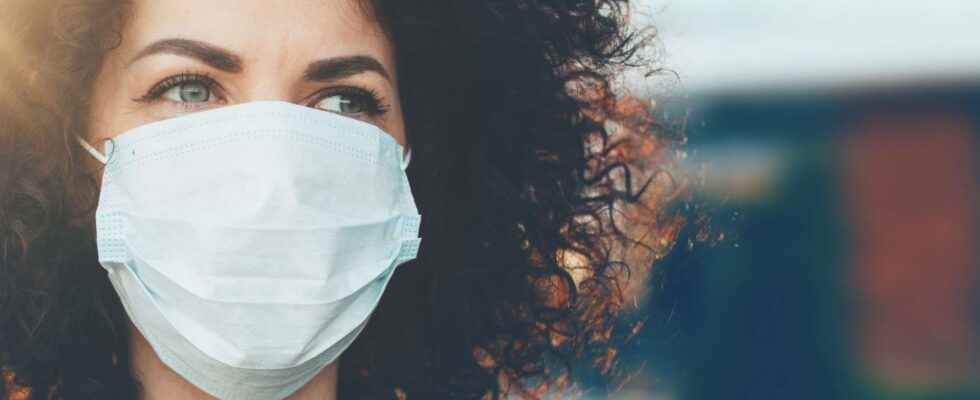Wearing a general mask made it possible to avoid contamination by SARS-CoV-2. Testimonials and anecdotes suggest that a few people may have suffered from recurring headaches. What is it really ?
You will also be interested
[EN VIDÉO] No, masks do not cause hypoxia This video sets the record straight about a post that went viral on social media. She claims that wearing a surgical mask causes hypoxia. Find out why this is wrong and how to wear your mask properly.
No studies have been conducted in the general population to find out whether wearing a surgical or tissue mask increased the occurrence of headaches. Therefore, testimonies and anecdotes cannot be used as evidence to attest to the phenomenon. On the other hand, two studies conducted by the same research department in Singapore, the first one, one year after the SARS-CoV epidemic, and the second recently, studied the occurrence of headaches in caregivers wearing FFP2 masks and working in high-risk areas such as intensive care units, isolation rooms, emergency rooms, operating theaters and general medical services. A recent review also explored the physiological and psychological avenues that could explain certain symptoms experienced when gate such a mask.
FFP2 mask and headaches: associations full of confounding factors
In the first study published in 2006 in the journal Acta Neurologica Scandinavica driving during the first pandemic of SARS-CoV, scientists have noticed a particularly high frequency of headaches during prolonged wear of the FFP2 mask among caregivers. The second study, published in 2020, in the journal Headache also finds such an association.
Unfortunately, the design of these studies does not allow us to conclude a causal relationship between wearing the FFP2 mask and headaches. Indeed, important confounding factors such as stress psychological and sleep disturbances, both potentially induced by longer and harder working hours during a pandemic could have influenced the higher occurrence of headaches. Also, the samples are small and there is no comparison made with control groups.
Mechanistic avenues to explain a potential individual phenomenon
If it is difficult to objectify the phenomenon with the help of empirical studies, one can still wonder what could make, physiologically speaking, that the mask causes more frequent headaches in some people. This is what American and Canadian scientists are trying to do in a comment posted in the review Environmental Research and Public Health.
Consequently, the straps too tight which come to pressure on the temples, deterioration of thehydration or eating habits could explain the headaches perceived in addition to the confounding factors already mentioned above. And no, the exchanges of gas are not responsible for the occurrence of headaches, since these are not affected by wearing a mask. All these explanatory suggestions are only valid for FFP2 masks. In the general population, the occurrence of headaches caused by the mask seems to be rather a phenomenon psychosomatic, if it actually exists and is not due to an underestimation of the previous frequency of headaches by those who experience it. Studies could potentially focus on the frequency of headaches in predisposed subpopulations.
Interested in what you just read?
Subscribe to the newsletter The health question of the week : our answer to a question you ask yourself (more or less secretly). All our newsletters
.
fs7
